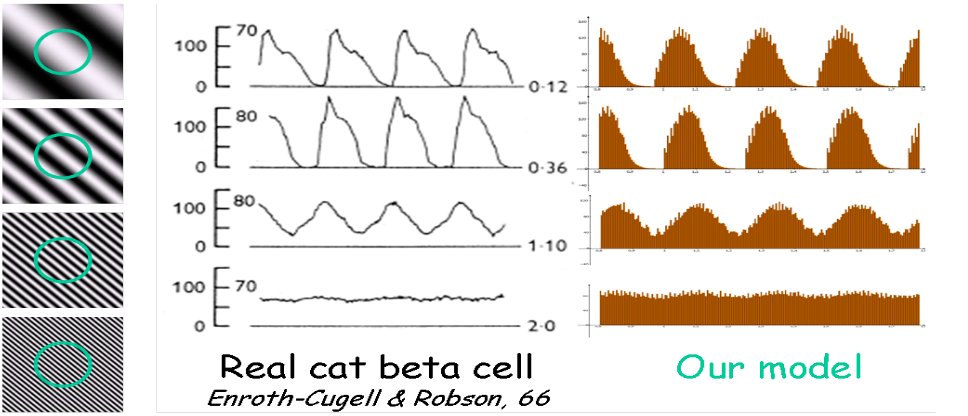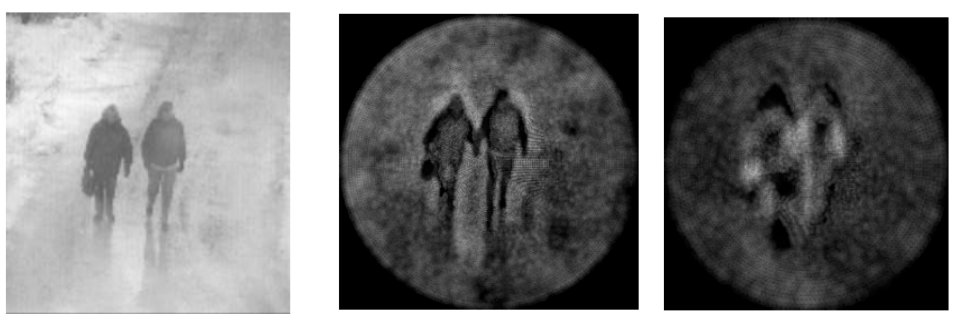Computer and numerical design of a non-standard bio-inspired early-vision front-end.
Objectives: Effective simulation of standard and non-standard retinal ganglion cells behavior to natural visual stimulation.
Methods: In order to analyze the non-standard retina cells’ behavior in a biological plausible context, we propose to use retinal simulation software: VirtualRetina. This simulator transforms an input video stream into spike trains generated by ganglion cells. The use of VirtualRetina allows us large-scale simulations (up to 100,000 neurons) in a reasonable computing time keeping a strong
biological plausibility. Its structure is based in channels modeled by a linear spatiotemporal filter followed by a non-linear stage with adaptive gain control.
The existing VirtualRetina implementation is going to be completed in three manners:
(i) Following the structure of the current channels’ implementation, we propose to add the non- standard channels corresponding to the non-standard retinal cells.
(ii) We also plan to modify the current structure in order to match the simulation results with the experimental data, that is, the non-standard channels will have for instance a non-linear spatiotemporal filtering stage.
(iii) Modifying also the current structure of VirtualRetina we plan to add nonlinearities, connections or interactions required between retinal layers to successfully simulate the behavior of standard retinal cell under natural visual stimulation. These three steps, in principle, will allow us to better understand the behavior of the non-standard retinal cells and its response under natural visual stimulation. This understanding could provide new insights for the modeling of early vision in visual cortex.
Based on this understanding, we plan to implement a new biologically inspired early-vision front-end process of retinal cells. This implementation will allow us to numerically verify the models here proposed.
Note that fast calculation but not real-time is targeted here. We are carefully going to optimize the code on sequential architectures, while its implementation on dedicated hardware is out of the scope of this project.
Similarly, to VirtualRetina, the bio-inspired modelization developed in this project is going to target both: biological plausibility (from Wohrer and Kornprobst 2009):
and effective natural image sequence analysis (from Wohrer and Kornprobst 2009):
This last image considers a degraded visual input (left-view) and the contrast detection (X/parvo channel, center-view) and the motion detection (Y/magno channel, right-view). As developed in the next task, the key aspect is not to consider “beautiful” images but provide visual operators working on realistic image sequences. The variational non-linear operators reviewed and developed in T2 and based on biologically plausible mechanism (Viéville et al, 2007) are going to break this actual limit and provide optimal early-vision detectors to enhance the actual VirtualRetina mechanisms.
The limit of the present approach is “real-time”, since the proposed algorithms (related to actual software modules available at the beginning of T2 and T4) run at about 1/100 of the video rate on standard processors. To speed-up our algorithms is out of the scope of this project.
Task steps:
i. Specification of the non-standard cells operator implementation.
ii. Specification of the standard cells’ response to natural visual stimuli.
iii. Execution of the benchmarks.


